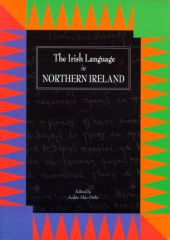Fax: 028 9032 1245
This chapters are copyright of the authors and are included
on the CAIN site by permission of the authors and the publisher. You may not edit, adapt, or redistribute changed versions of this for other than your personal use
without the express written permission of the author or the publishers. Redistribution for commercial purposes is not permitted.
From the back cover:
Discussions about the Irish language tend to fall into tediously predictable patterns. It is hoped that this book will be a step towards an informed, critical and engaged debate.
The essays here, which range from the personal to the scholarly, revisit old questions with new perspectives. Some of them bring fascinating new material to light for the first time.
This is no dry academic work. All the contributors are involved with the Irish language movement, and the interplay of commitment and objectivity make for a stimulating read.
Foreword
The essays here are designed to stimulate constructive debate on the Irish language in Northern Ireland. In a society where communication takes the form of cliches being hurled back and forth across no-mans-land, it is not always easy for Irish language enthusiasts to find the space for a reasonable discussion. This book represents an attempt to create such a space.
The essays draw on a number of disciplines; history, anthropology, sociolinguistics, and four of them are based on doctoral research. The authors were asked to make their work as accessible as possible to the general reader, and to cut down on learned gobbledygook.
Inevitably, some themes recur throughout the book. The relationship between political ideology and the language movement is discussed in all the essays, and a number of contributors offer varying interpretations of the role of Douglas Hyde. No attempt was made to impose order on such overlapping themes: in itself, the variety of opinion expressed here both reflects and contributes to the debate within the language movement.
Much remains to be covered: Comhaltas Uladh, Irish-medium education and Irish in English-medium schools, the residual Gaeltachts within Northern Ireland in the early days of the state, the relationship of the Catholic church with the language movement, the gaelicising of west Belfast, the 1991 Census, Irish in the arts, economic activity, broadcasting, prisons. Further research is needed in all these areas.
Our thanks are due to the contributors, to Colm Mac Aindreasa for knowing what buttons to push, to Séamus Ó hAnnaidh for his patience and creativity, and to Máire Bean Uí Bhruadair and Eibhlín Ní Chnáimhsí for their direct input and for keeping the show on the road when their colleagues were otherwise engaged.

